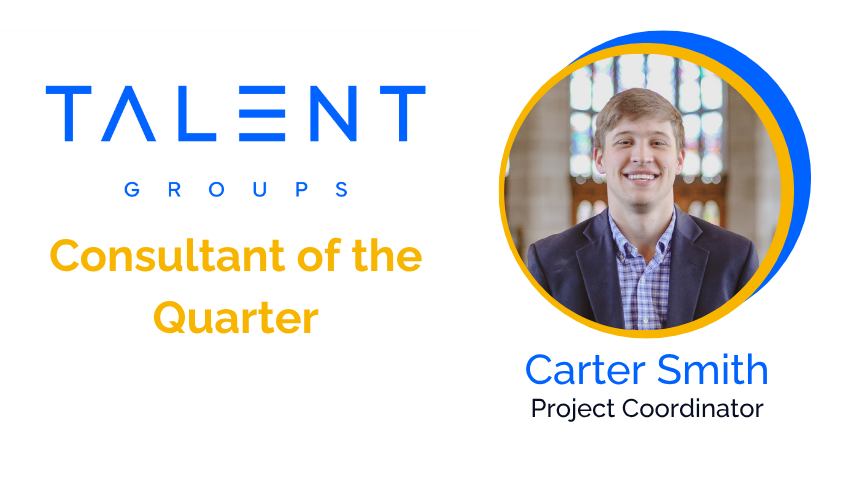Putting Your Best Foot Forward with a Technical Resume

As any job-seeker knows, a resume’s job is not to get you hired, but to get your foot in the door. Your goals for your technical resume are to assure the hiring manager that you have the right technical skills for the position, as well as the experience and soft skills to set yourself apart from the competition. The challenge? Communicating all that in less than 30 seconds!

Typically, a technical resume is used to apply for jobs in these and other fields:
- Software Engineering
- Network and System Administration
- Web Development and UX design
- Data and Systems Analysis
- IT Project Management
- Security
If that’s you, read on for our guidelines and section-by-section tips on writing a technical resume that will get that foot in the door and push it open so that you can prove to the hiring manager that you are worth the investment!

General Guidelines for Writing a Technical Resume
Here’s what a technical resume should do:
- Be easily readable and informative—you’ll only have 20–30 seconds to hold the screener’s attention
- Show that you have the skills and experience to be the right fit for the job
- Stand out from the competition
Here’s what it should never do:
- Make the screener work to find the pertinent information
- Be more than two pages long
- Have any errors or misspellings
Follow these general guidelines to make your resume stand out for all the right reasons:
- Typically, your application will be one of hundreds for the position, so it is crucial to be both concise and clear about your skills and experience.
- Tailor your resume to the job you are applying for. All the information should be pertinent and reflect the language in the job description.
- Your resume should be attractive and clean in appearance—that means no unique typefaces. Keep use of color to a minimum, if used at all. The formatting should be consistent throughout. Use bullets to break up the information and make the resume easy to visually scan.
- As a technical professional, you are well-versed in the jargon and acronyms used in your specialty and within your company. In a resume, however, it’s best to avoid any but the most common acronyms, so spell out anything that could be unfamiliar to or misinterpreted by a screener.
- The organization of your resume can be either chronological or functional style. Each style has its strengths. If you have no gaps in employment and a history of increasing responsibility, the classic chronological style is better for you. If, however, you have gaps or even a career change, the functional style lets you highlight your pertinent skills.
- Edit and proofread your resume over and over again. Ask several other people to check it, too. Your goal is no typos, no errors—remember, your resume itself demonstrates your attention to detail.
- The file format that you email or upload should be PDF, Microsoft Word or Google Docs.
- Finally, a good practice is to keep your resume updated with your latest position, skills and accomplishments. That way, you will have a core document that you can quickly tailor to new opportunities as they arise.

The Building Blocks of a Technical Resume
The sections that make up a technical resume are fairly straightforward, while allowing you to customize the information for the application.
Contact Information
Include at the top of the page your full name, phone number, email address and city and state where you live. Add a link to your LinkedIn profile or online portfolio, if you have one.
Personal Summary
Including a personal summary in your resume (just below the contact information) makes it twice as likely to get a response, so by all means, include one. In a well-written sentence or two (plus a few bullets, if that applies), highlight your notable skills and achievements using quantifiable details, and describe why your work experience makes you an ideal candidate. Focus on substance, not fluff, by minimizing adjectives and adverbs.
Skills
Analyze the technical skills that are required and desired for the position, then list the applicable skills you possess—without exaggerating, of course. (Many companies use keyword scanners to eliminate unqualified resumes, so be sure to use the exact terms listed in the job posting.) The skills may include programs, coding tools, platforms and databases that you have mastered or are familiar with. Indicate your mastery level for each skill, describing yourself as expert, proficient, intermediate, familiar or similar.
Work Experience
More than just a listing of your employment, this section is where you connect what you’ve done in previous jobs to the position you are seeking. Include no more than your most recent ten years of experience, or your previous three to five jobs, and omit any irrelevant jobs (unless that would leave a big gap in your employment history).
Don’t merely list your responsibilities, either. Describe your most impressive and pertinent accomplishments, backing them up with concrete numbers and percentages, such as the amount of increased production, the time shaved off a process or the percentage of revenue growth. Additionally, use measurable results to describe accomplishments that demonstrate leadership, teambuilding, communication or other soft skills.
Education and Certifications
Include your college degree(s) here, along with professional certifications that apply to the job you are seeking.
Awards and Other
Describe awards and accolades you have earned, and list any publishing credentials or patents. If you have military clearance, consider including it, as well as your active duty and reserve time. Personal projects and volunteer experience can be included here, too, if they are relevant to the job you are seeking.
Share:




